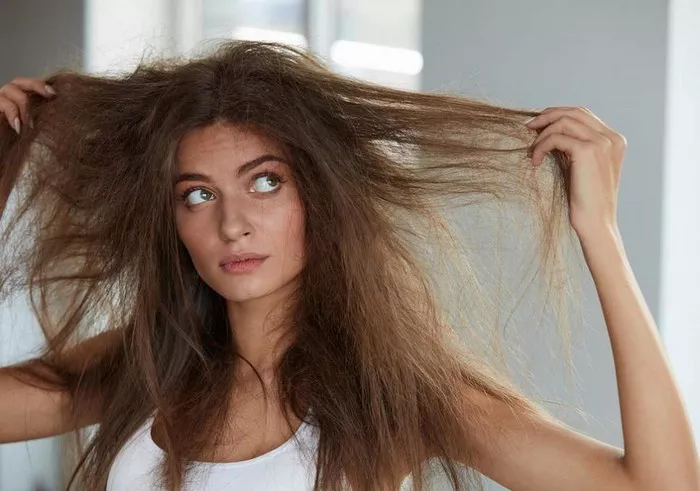When it comes to drying hair, two popular methods dominate the conversation: air drying and towel drying. Each technique has its proponents, and understanding their effects on hair health and style can help you make an informed choice. This article explores the benefits and drawbacks of both methods, so you can decide which is best for your hair type and lifestyle.
The Basics of Hair Drying
Understanding Hair Structure
Before diving into drying techniques, it’s essential to understand the basic structure of hair. Hair is composed of keratin, a protein that forms the hair shaft. The outer layer, known as the cuticle, protects the inner layers and helps retain moisture. How you dry your hair can significantly impact the integrity of the cuticle and, ultimately, the health of your hair.
Why Hair Drying Matters
How you choose to dry your hair can affect its health, texture, and appearance. Improper drying methods can lead to issues such as:
Frizz: Excess moisture and damage to the cuticle can result in frizzy hair.
Damage: Excessive friction or heat can weaken hair strands, leading to breakage and split ends.
Dryness: Over-drying can strip hair of its natural oils, resulting in dry and brittle strands.
The Case for Air Drying
Benefits of Air Drying
Gentler on Hair: Air drying is generally the most gentle method, reducing the risk of heat damage and breakage.
Retains Moisture: This method allows your hair to maintain its natural moisture balance, leading to softer and healthier-looking hair.
Less Frizz: Air drying can help minimize frizz by allowing hair to dry naturally without excessive manipulation.
Potential Drawbacks of Air Drying
Time-Consuming: Air drying can take a significant amount of time, especially for those with thick or long hair.
Inconsistent Results: The outcome can vary based on weather conditions, humidity, and your hair type, leading to unpredictable styles.
Limited Control: It may be challenging to achieve specific hairstyles, such as straightening or adding volume, without additional styling products or tools.
The Case for Towel Drying
Benefits of Towel Drying
Speed: Towel drying can significantly reduce drying time, allowing you to get ready faster.
Control Over Style: Towel drying can help shape your hair, making it easier to achieve your desired style.
Eliminates Excess Water: Removing excess water can prevent your hair from becoming overly saturated, which can lead to longer drying times.
See Also: Is Drinking Water Good for Hair Growth?
Potential Drawbacks of Towel Drying
Friction Damage: Rubbing hair with a towel can create friction, leading to frizz, breakage, and split ends.
Over-Drying: Towel drying can strip hair of its natural oils, especially if done aggressively.
Moisture Retention Issues: Depending on the towel used, it may not absorb enough moisture, leading to damp hair that takes longer to dry.
How to Properly Towel Dry Your Hair
If you choose to towel dry your hair, here are some tips to do it correctly:
Use a Microfiber Towel
Microfiber towels are softer and less abrasive than regular bath towels. They are designed to absorb moisture without creating friction.
Gently Blot, Don’t Rub
Instead of rubbing your hair with the towel, gently blot or squeeze sections of your hair to remove excess water. This technique minimizes friction and reduces the risk of damage.
Avoid Aggressive Drying
Be gentle while towel drying. The goal is to remove moisture without causing breakage or frizz.
Combining Techniques: The Best of Both Worlds
For many people, a combination of air drying and towel drying may be the best approach. Here’s how to blend both methods effectively:
Towel Dry First
After washing your hair, use a microfiber towel to gently blot and absorb excess water. This initial drying phase can help speed up the overall drying process.
Let It Air Dry
After towel drying, allow your hair to air dry. This method reduces heat exposure while still giving you some control over drying time.
Use Products Wisely
Consider using leave-in conditioners, serums, or curl enhancers to help define your style and combat frizz during the air drying phase.
Hair Type Considerations
Different hair types may respond better to specific drying methods. Here’s a brief overview:
Curly Hair
Best Method: Air drying is often recommended for curly hair, as it helps maintain natural curl patterns without frizz.
Tips: Use a microfiber towel or a T-shirt to absorb excess moisture before allowing your curls to air dry.
Straight Hair
Best Method: Towel drying can be effective for straight hair, helping to speed up the drying process.
Tips: Be cautious with friction; opt for a gentle blotting method instead of aggressive rubbing.
Fine Hair
Best Method: Towel drying can work well for fine hair, as it helps eliminate excess moisture without weighing hair down.
Tips: Choose lightweight products to maintain volume during the drying process.
Thick or Coarse Hair
Best Method: Air drying may be preferable, as it allows thick hair to retain moisture while preventing heat damage.
Tips: Use leave-in conditioners or oils to keep hair hydrated and defined.
Conclusion
Ultimately, the choice between air drying and towel drying comes down to personal preference, hair type, and lifestyle. Air drying is generally the gentler option, promoting healthier hair by reducing heat and friction damage. On the other hand, towel drying can save time and provide more control over styling.
For many, a hybrid approach that combines both techniques offers the best results. By towel drying gently and then allowing hair to air dry, you can enjoy the benefits of both methods while maintaining your hair’s health. Experiment with different techniques to discover what works best for you and your hair type, ensuring that your locks remain beautiful, healthy, and vibrant.
You Might Be Interested In
- Is Silicone Bad for Curly Hair? Unpacking the Myths and Facts
- Can Split Ends Be Repaired? Understanding Hair Health and Care
- Does Longer Hair Look Thinner? Unraveling the Myths and Facts


